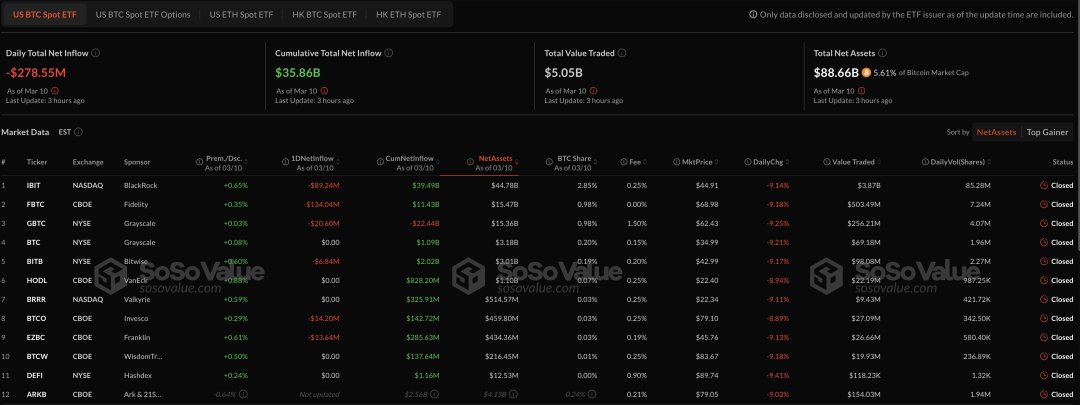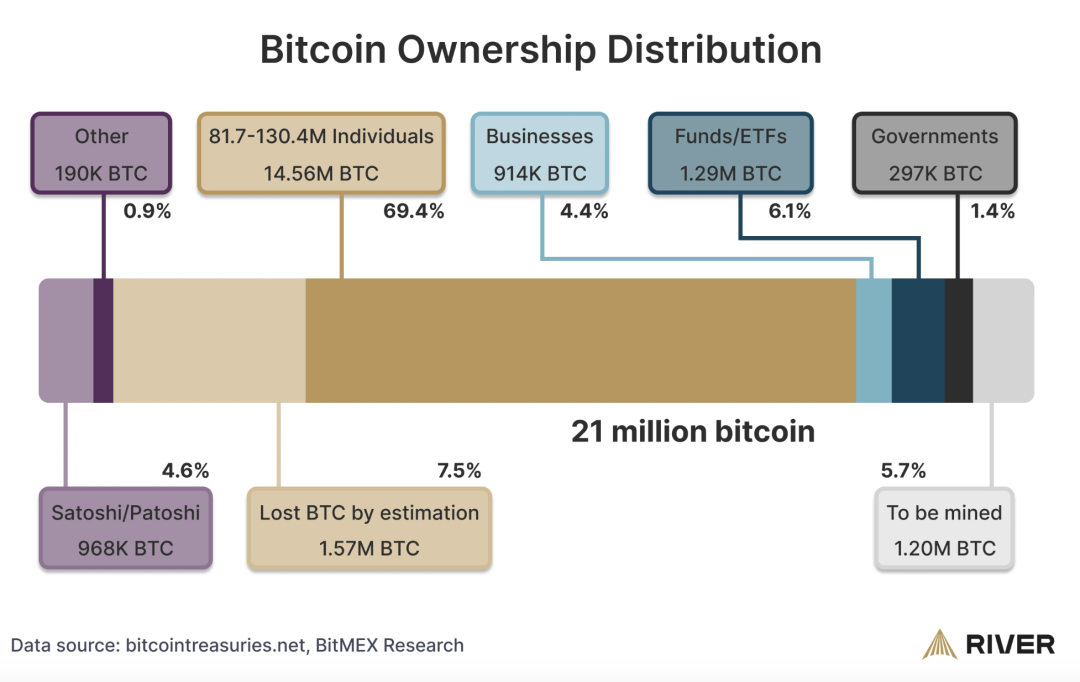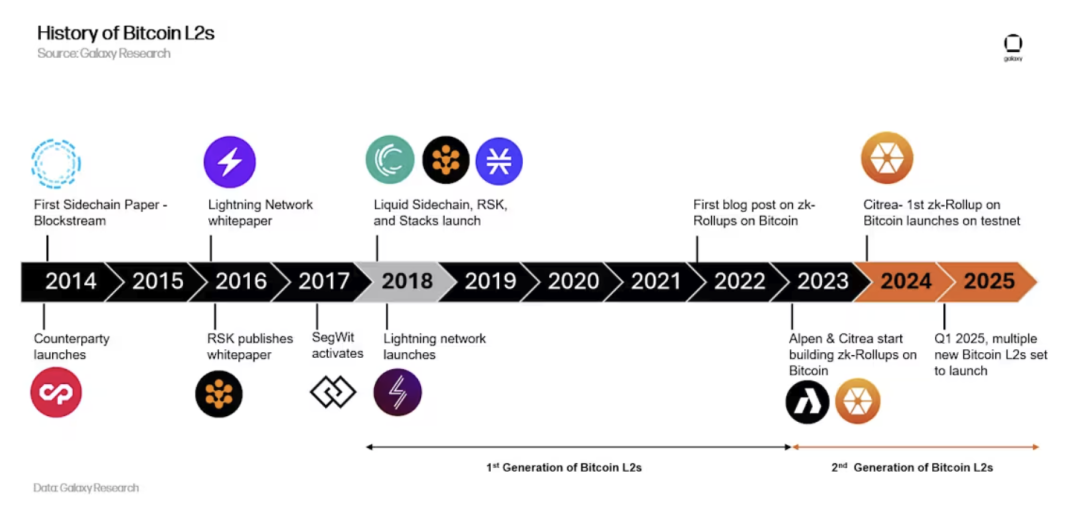EigenLayer proves that the need for Ethereum security space ≠ monetization of Ethereum security space.
Babylon’s counterpart is actually the BTC Spot ETF, which promises less security and returns than off-chain.
After a year of fierce competition and collapse, we finally reached a consensus that people’s demand for BTC is the demand for BTC itself, which cannot be extended to BTC pledged assets, BTC L2 and BTC-based DeFi.
The success and failure of replicating Ethereum
Babylon is not a new project, but it has been unable to complete financing for a long time and remains in the field of academic research.
Solv was not the initial entrepreneurial direction. It was a timely move after adjusting its direction several times and rose to the top of Binance.
Are Bitlayer/BEVM/Merlin and other BTC L2 considered new projects? We can only say that there is a 50% chance that they are. Most of them were established at the same time as WBTC. Facts have proved that the roads that did not work did not witness miracles in the second attempt.
Even the Runes could not replicate the Miracle Nuan Nuan of the Inscriptions, which ultimately chilled people's hearts, but they said that the cool autumn was a good time.

Image caption: BTC ETF Image source: @sosovalue
In the 2025 Q1 quarterly report, only the BTC Spot ETF was successful. Apart from Bitcoin itself, ETF is the most reliable investment tool, in sharp contrast to the ETH ETF. The Ethereum chain ecosystem is flourishing, and BTC off-chain transactions are in full swing.
We have to admit that BTC does not need L2 and staking and other scenarios that reinvent the wheel. The absence of smart contracts is not the market space for Babylon, but an inevitable choice for robustness.
Although people are cynical about Vitalik and Ethereum at this stage, most of the innovations of BTC and Solana are imitations and modifications of Ethereum. Solana took away DeFi and Meme, and BTC took away the pledge system and interest-bearing scenarios, and started playing with the RWA of digital gold.
But Solana has at least achieved temporary success, and BTC itself is strong. It has fallen back from $80,000. It is painful to see SOL 100 at the beginning, and what is even more painful is that BTCFi has been falsified temporarily.
ETH L2 did not fail, at least it nurtured successors such as Base. The failure of price does not mean the lack of practical scenarios, but BTCFi's staking layer, L2 and DeFi have only failed and failed more.
In short, BTCFi did not replicate Ethereum’s success, but instead followed all of Ethereum’s failures.
The pain of mainnet security monetization
As mentioned earlier, Eigenlayer hopes to monetize Ethereum's security space, and then split it into partitions and rent them out to projects with security needs. In essence, Eigenlayer does not provide security, but is only a porter of security.
Why can't this system be migrated to other public chains?
Things like LSD/LRT, Meme, DEX, etc. can be learned by various public chains without any problems of acclimatization. Is it only BTC that cannot be replicated?
In fact, each chain only tends to favor one model: asset issuance products, regardless of whether its packaging is L2 or a pledge/re-pledge system.
If you are also interested in the SVM L2 track, then we can predict in advance that Solana, with a market value of 100 billion, cannot support suburban economics. Beijing needs a sub-city center, but Tongliao obviously does not.
The same is true for BTC. The trillion-dollar Bitcoin ecosystem has only one product, namely BTC itself. If you use BTC to do some marginal arbitrage, such as WBTC and ETF, then the market value of BTC will be enhanced and will be recognized and rewarded by the market.
However, if you want to go a step further and transfer the value of BTC to your own token, you will face an eternal problem: how to get people to exchange Bitcoin for your token. This is 100 levels more difficult than Sun Ge getting people to exchange USDT for USDD.

Image caption: BTC holder distribution Image source: River.com
Various BTC pledge agreements are in full swing, but the world's major BTC is distributed in the hands of exchanges and asset management companies. The BTC on-chain pledge system is just a noun and can hardly be called an entity.
Ultimately, the Bitcoin staking system cannot be equated with the sense of security that comes from holding BTC. If the staking system cannot be established, then BTC L2 and BTC DeFi cannot be established either.
Two dragons never meet
ETH L1 was crowded, and large-scale L2 infrastructure was carried out, but it was eventually stolen by Pump Fun. This is the whole story of the cryptocurrency circle in the past six months.
Recently, if BTC L2 had not started to build momentum before the coin issuance, people in the fast-paced cryptocurrency circle might have forgotten this ancient memory. In my personal opinion, the only winner is Merlin Chain's rapid coin issuance + long-term operation.

Image caption: BTC L2s development history Image source: Galaxy Research
The earlier you issue coins, the worse your reputation will be; the later you issue coins, the harder it will be to control the market. If you are destined to be scolded by retail investors, you might as well choose a way to make more money. This is the whole story of BTC L2 in the past year.
By comparison, ETH itself needs L2 to share traffic. The current game is just an adjustment of the financial relationship between the central government and local governments. The weakness of the EVM ecosystem itself has little to do with L2s. Even if Ethereum collects more taxes on L2s, retail investors will not return to the EVM ecosystem.
The same is true for SVM L2. Pump Fun has entered the end of the profit curve, and the way it chooses to survive is to grab the cash flow of AMM DEX. If it is in the Ethereum ecosystem, the probability is that Pump Fun Chain will appear.
BTC L2 is the most embarrassing. Compared with the support and guidance of Vitalik and the Ethereum Foundation, the technical solution of BTC L2 is chaotic and disordered. There are imitators who try to imitate the ZK/OP route, detail-oriented people who are obsessed with patching existing operation codes, and reformists who want to complete the functions of Bitcoin scripts.
Compared with the decentralization of SVM L2, BTC L2 seems to have a stronger color of "project party + VC". After all, the attitudes of public chain co-founders Anatoly and Solana Foundation towards SVM L2 are "neither support, nor opposition, nor encouragement, nor rejection". Unexpectedly, Solana, which has long been known as the computer room chain, is the OG in the currency circle that truly implements the concept of decentralization.
And so it went on for 365 days until it entered the Listing node in the post-VC and post-market maker era. Amid the misunderstanding and shock of the onlookers, BTC L2 announced its airdrop plan and token economics mechanism.
As for BTC itself, it chooses not to care about these disturbances, whether it is 80,000 or 1 dollar, whether it is digital gold or the savior of US debt, they are all external things and have no effect on me.
Conclusion
Since the birth of BTC, people have developed large-scale industries such as wallets, mining, and wrapped assets, laying the foundation for the Ethereum ecosystem. Even Vitalik himself was a seed cultivated by Bitcoin Magazine.
However, BTC is too special. Compared with many competitors that need to face mass adaptation and externalities, Bitcoin itself has no dominant personnel and does not need to conquer the political system like its successors such as Movement.
Just like the internal mechanism of AI, this absurd world is not explainable. BTC chooses not to explain it. BTCFi hopes to explore a new path, but it turns out that the old path is more robust.













